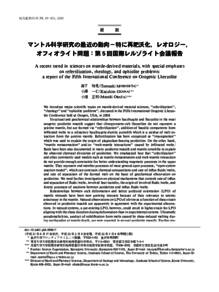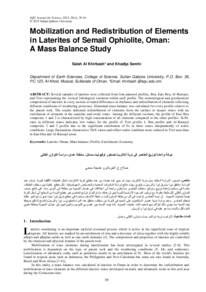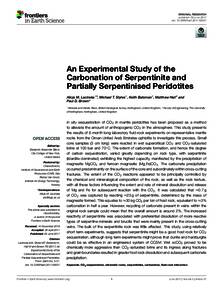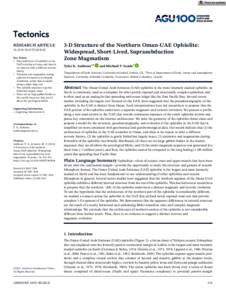Document
A Recent trend in sciences on mantle-derived materials, with special emphases on refertilization, rheology, and ophiolite problems : a report of the Fifth International Conference on Ogenic Lherzolite.
Identifier
DOI: 10.2465/gkk.090617
Contributors
Ozawa, Kazuhito., Author
Obata, Masaki., Author
Publisher
Japan Association of Mineralogical Sciences.
Gregorian
2010-05
Language
English
Subject
English abstract
We introduce major scientific topics on mantle-derived material sciences, "refertilization", "rheology" and "ophiolite problems", discussed in the Fifth International Orogenic Lherzolite Conference held at Oregon, USA, in 2008. Structural and geochemical relationships between harzburgite and lherzolite in the most orogenic peridotite massifs suggest that clinopyroxene-rich lherzolites do not represent a pristine mantle, but are formed via "refertilization", addition of basaltic components from infiltrated melts to a refractory harzburgitic-dunitic protolith which is a residue of melt extraction from the pristine mantle. Refertilization has been recognized as "impregnation" which was used to explain the origin of plagioclase-bearing peridotites. On the other hand, "mantle metasomatism" and/or "melt-mantle interactions" caused by infiltrated melts/fluids have been also documented in many peridotite massifs and mantle xenoliths to explain the observed chemical diversities of peridotites. We emphasized here that "refertilization" and other commonly used models such as mantle metasomatism and melt-mantle interaction do not provide enough constraints for better understanding magmatic processes in the upper mantle. They represent end member processes of more general open processes, "open-system reaction model", which can constrain chemical compositions and rate of influx fluids/melts, and rate of separation of the formed melt on the basis of geochemical observation on peridotites. We need further investigation on physical mechanisms that controls rate of influx and separation of fluids/melts, involved heat transfer, the origin of involved fluids/melts, and kinetic processes of reactions between peridotites and influx fluids/melts. Relationships between rock deformation and lattice preferred orientation (LPO) of mantle minerals have been now growing interests because of their relevance to seismic anisotropy in the mantle. Natural observations on LPO of olivine as a function of shear strain observed in peridotite massifs are apparently in agreement with the experimental observations. In natural systems, a pre-existing LPO, however, could result in higher strain for LPO aligning with the shear direction during deformation than in experimental systems. Ultramafipseudotachylytes, product of solidification from melts caused by shear-induced melting during earthquakes at mantle depth, are now reported in several peridotite massifs. Further studies on ultramafic pseudotachylytes will provide new insights into earthquake nucleation at mantle depth. The origin of ophiolite, in mid-ocean ridge, supra-subduction zone, or back-arc setting, is still controversial. Recent studies on the Oman ophiolite by Japanese scientific groups revealed that the northern part of the Oman ophiolite was formed at a fast-spreading ridge and was later modified by subduction-related magmatism. Tectonic switching from a mid-oceanic ridge to an island arc has been observed in many ophiolites, and is therefore essential in the formation and/or exhumation of ophiolites. These studies will provide information on evolution of crust-mantle sections of island-arc, where direct sampling is difficult.
Member of
ISSN
1345-630X
Resource URL
Category
Journal articles




